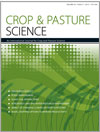Here we propose that the perspective of phenotypic plasticity can enhance our understanding of the role of fertile tillers in accommodating environmental variation. We tested the hypothesis that the plasticity of yield correlates with the plasticity of ear number using free-tillering (–tin) and reduced-tillering ( tin) sister wheat lines in two genetic backgrounds, Lang and Silverstar. Crops were grown in 10 rainfed environments resulting from the combination of seasons, sites, nitrogen rates, and sowing dates. The combination of lines and environments generated a range from 157 to 357 ears m–2 at harvest, and a yield range from 1.9 to 4.2 t ha–1. Plasticity was quantified with two methods, slopes of reaction norms and variance ratios; both methods returned the same ranking of lines for both ear number and yield.
The tin allele reduced the plasticity of both ear number and yield in Lang but not in Silverstar. The reduced plasticity associated with the tin allele in Lang had two components: a small reduction in ear number under low-yielding conditions, and a large reduction in the capacity to respond to higher yielding environments. Consistent with our working hypothesis, plasticity of yield and plasticity of ear number were correlated (R2 = 0.81, P = 0.01). Plasticity of ear number was associated with the plasticity of shoot biomass at harvest (R2 = 0.74, P = 0.006), and plasticity of biomass was associated with the plasticity of yield (R2 = 0.86, P = 0.0009). This suggests that the environmental responsiveness of yield was partially mediated by the environmental responsiveness of fertile tillers.
We found positive correlations between plasticity of ear number and plasticity of several traits including biomass, radiation-use efficiency and water-use efficiency, and a negative correlation between plasticity of ear number and plasticity of seeds per ear. Ear number per se was unrelated to biomass, radiation-use efficiency, water-use efficiency, and seeds per ear. We conclude that a dual focus on traits per se and their plasticity is a fruitful approach to understand the phenotype, particularly when genotype × environment interaction is large.





